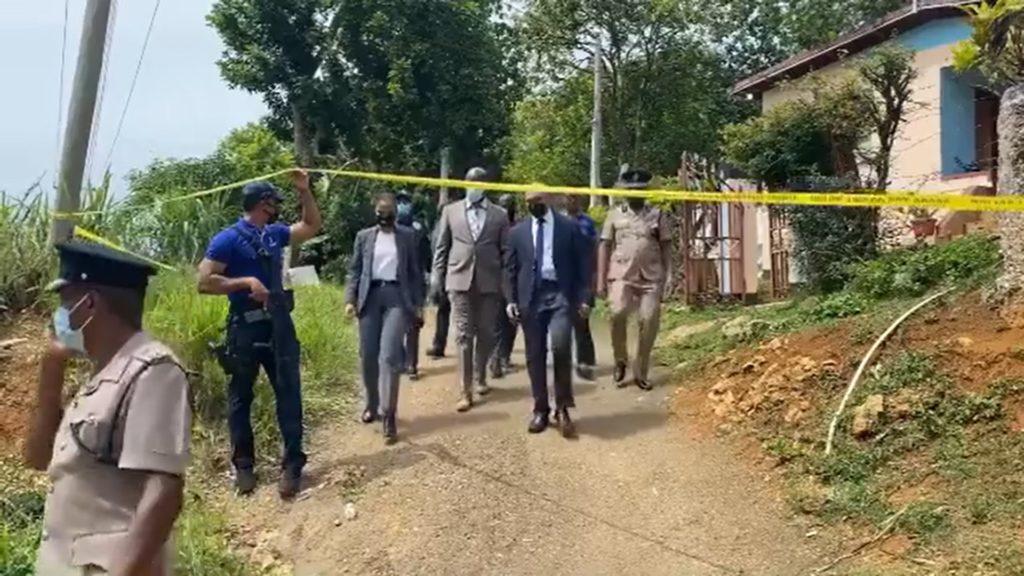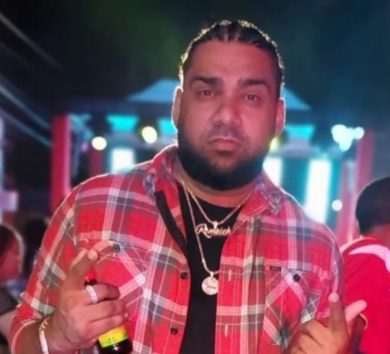

A recent tweet on Jamaican Twitter asked, “What murder cases in Jamaica have you never forgotten?”
What followed were 140+ replies and more than 300 quote tweets enumerating more than 100 horrific murder cases of the past few decades.
Some were well known, as they had been heavily publicised -for example the double murder of a woman and her daughter in Lauriston was repeated several times, as was the murder of 11-year-old Ananda Dean. Others were not as familiar, or didn’t have details, such as one tweet which read, “Grade 6. My friend, his mom and his dad were all killed by the mom’s lover who later killed himself.”
A second order consequence, or effect, refers to the idea that every action has a consequence, and each consequence has a subsequent consequence.
There were also several “this is not normal” comments – the point being that it cannot be normal for one small country such as Jamaica to have racked up all of these terrible murders that we all know about.
Are we “not normal”? Jamaica is an outlier, as ours is the highest (or one of the highest) murder rates in the world.
But this awful trajectory of murder that surrounds us is not abnormal in a context of a major gang violence problem, such as the one we have. There is nothing endemic about the violence in Jamaica. We are not an especially “murderous people”: homicide rates for Jamaica were eight or nine murders per 100,000 in 1960-61, whereas the global average murder rate in 2017 was six per 100,000.
The apparent prevalence of non-gang related homicides – murders of a more personal nature – can be explained by “second order consequences/effects” of the gang problem. A second order consequence, or effect, refers to the idea that every action has a consequence, and each consequence has a subsequent consequence. In Jamaica, these second order effects are:
- The police are spread too thin to address the murder problem in its entirety. The bulk of policing resources have to be devoted to the gangs, to whom the JCF attributes 70 per cent to 80 per cent of all murders. This is to the detriment of other policing. It is not a criticism of the JCF, as nothing but a massive increase in manpower, armaments, and quality of personnel would make a meaningful difference to increase their capacity to what would be necessary to adequately deal with all violence using policing measures.
- The quantum of gang murders, and the fact that most of them appear to not be resolved (people apprehended, charged, and prosecuted), creates an environment where people in general, not just gangsters, believe they can get away with murder. Jamaica does have a low (35 per cent) clear-up rate for murder cases. People – not just gangsters – take advantage of the fact that they will likely get away with murder. The fact that many people are reluctant to give evidence as witnesses are routinely killed further exacerbates this impunity.
- The widespread gang presence creates a large pool of available contract killers to carry out murders.
In effect, in Jamaica it is easy to murder someone, and to get away with it, easier than most other places. There are too few disincentives.
It’s improbable that Jamaicans are innately more murderous than any other people, nor is it likely that we have a higher prevalence of sociopaths, serial killers, or psychopaths. Rather, it is simply that people feel comfortable settling personal disputes through murder here, more than they would in a country where murders are usually investigated and solved.

What many call a “culture of violence” is actually an excess of murder-going-unpunished that lends itself to murder being perceived as low-risk, what might be called an “impunity effect”.
In a country where murderers are more routinely punished, people would be less likely to kill their boss who they think is about to fire them (Peter Vogel), or the new manager who has figured out the employees’ internal stealing ring and has disrupted their racket (Rosa Goveia), or their spouse who is about to leave (numerous cases), or their father’s wife, or sister, with whom they are in a dead lef’ dispute (Andrea Lowe-Garwood, Tamar Geddes, respectively), or as a way of cashing in on life insurance (Omar Collymore), or get rid of an inconveniently pregnant girlfriend (Santoya Campbell).
There is data that supports this observation. In a 2009 study on the determinants of violent crime, of nine variables, only two showed a positive correlation with a decreased murder rate: the clear up rate and the imprisonment rate. The prospect of being caught and imprisoned, is, it turns out, a deterrent to murder.

Incidentally, while the murder clear up rate is low, it may be that the clear up rate differs for gang-related murders, as opposed to other types of murder. Almost all of the murders mentioned above were resolved. Vogel’s murderers, his live-in helper (housekeeper) and her boyfriend, were convicted. Andrea Lowe-Garwood’s stepson is charged with murder and being held without bail. Tamar’s sister got 20 years in prison.
Collymore is jailed on murder charges, without bail. Santoya’s married impregnator was convicted and sentenced to life in prison; he becomes eligible for parole after he spends 25 years behind bars. Rosa Goveia’s murder appears to not have been solved.
Even if this is so, the overarching narrative is that murder continues unabated in Jamaica. The plethora of murders reported in the media every day, together with the low clear up rate, creates an atmosphere of general impunity. So even if non-gang murders do stand a better chance of being prosecuted than gang murders, the dominant perception is that most murders go unsolved, and thus would-be murderers rationally perceive the risks of committing murder to be low.
If non-gang murders are a second order effect of extreme gang violence, the obvious solution is to destroy the gangs. However, traditional policing, regardless of the quality and quantity of personel and equipment, can only take us so far in increasing the clear up rate, imprisoning more criminals, and making it known that murderers – whether gang-related or not – will be swiftly caught and punished. What we need to do is regularise informal communities that provide the safe havens upon which gangs depend. Fewer safe havens will lead to fewer gangs, and thus fewer gang-related murders. The impunity effect generated by the surfeit of gang murders will then begin to subside, and Jamaica should start to more resemble a “normal” place.






Comments